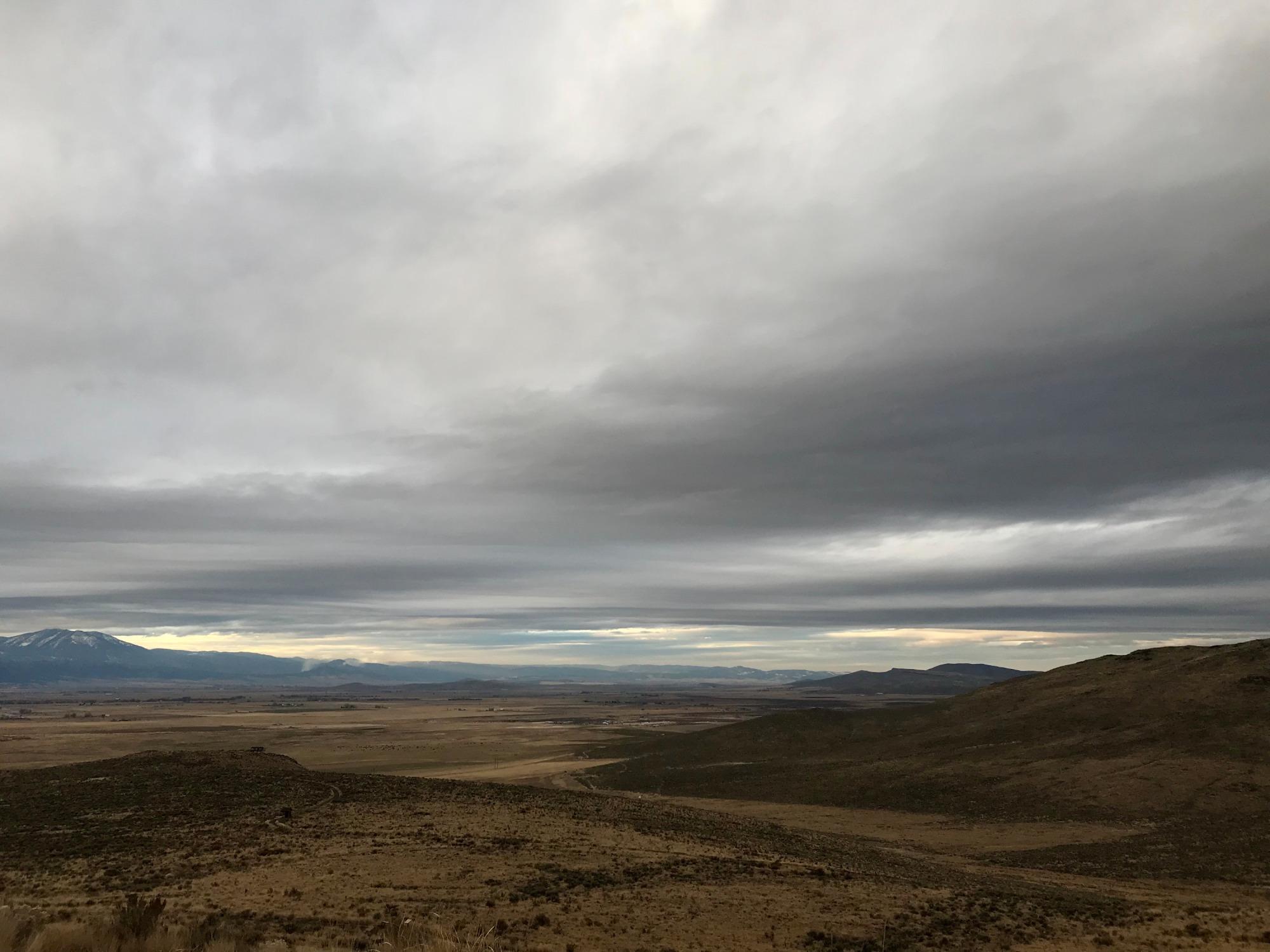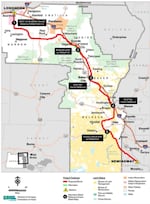
The site of the proposed Boardman to Hemingway Transmission Line Project in Baker County, Oregon.
Courtney Flatt
This story was updated on Monday, Nov. 20 with new information about opposition to the decision.
The federal government has approved plans for a controversial transmission line that would cross public lands in eastern Oregon and southwestern Idaho. The Bureau of Land Management announced Friday that Idaho Power will get right-of-way on federal lands for the 300-mile project.
The Boardman to Hemingway Transmission Line Project will cross public, private and state lands. The Interior Department says the high-voltage line will help connect new renewable energy projects — like wind and solar farms — to the grid. It should also help meet increasing demands as more people move into the area.
Idaho Power officials called the decision a "significant milestone."
"Our need is to serve our customers cost effectively in the future with this project," said Mitch Colburn, manager of transmission and distribution strategic projects at Idaho Power.
Supporters say the project is greatly needed to provide more electrical capacity between the Pacific Northwest and the Intermountain West.
“BLM’s approval of this interstate transmission line is a long overdue decision that will bolster our regional infrastructure and ensure that energy is delivered efficiently and reliably to customers,” said U.S. Sen. Mike Crapo, R-Idaho, in a news release. “This type of project is the result of a collaboration between multiple stakeholders to move to meet the energy demands of the region.”
The plan has been a decade in the making. The project had stirred up controversy with farmers and conservationists, who worried that it would fragment habitat. Other people had worried about protecting scenic valley views and parts of the historic Oregon Trail.
Numerous routes were proposed, ranging from a route that followed Interstate-84 to a route that went straight through important habitat areas in Baker County, Oregon.

The Boardman to Hemingway transmission route that was approved by the Bureau of Land Management. Its approval was announced on Nov. 17, 2017
Idaho Power
Near Baker City, the transmission line was rerouted to avoid critical mating grounds for the imperiled sage grouse.
At a recent sage grouse conference, Nick Myatt with Oregon Department of Fish and Wildlife, said from a resource stand-point, the area that passes near Baker City’s National Historic Oregon Trail Interpretive Center was the most controversial spot on the proposed line.
There’s widely-loved views, local airport buffers, irrigated agriculture and sage grouse core habitat.
"In my mind — from a sage grouse (perspective) — balancing all of the different constraints and use, we've landed at a pretty good place," Myatt said.
The transmission project would end up costing $1 billion to $1.2 billion.
Next, the project has to go through the Oregon Energy Facility Siting Council's permitting process. Idaho Power projects it will be in service 2024 or later.
Groups opposing the transmission line said that Idaho Power had not demonstrated a clear need for such a large project.
The STOP B2H Coalition said in a news release that the transmission line plans do not take into account decreasing energy consumption rates and increasing costs of the “$1.2 billion-plus dinosaur.” Coalition members also worried about viewscapes and historical landmarks that would be affected by the line.
“They are also allowing 180 foot transmission towers to deface the view in front of the National Historic Oregon Trail Interpretive Center in Baker County and allow devastating road construction along sections of our National Historic Oregon Trail,” said Fuji Kreider, STOP B2H Coalition member.
The group said it would consider litigation once it looks more into the BLM’s decision.
